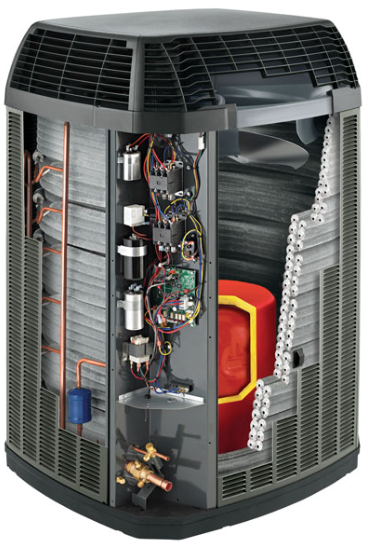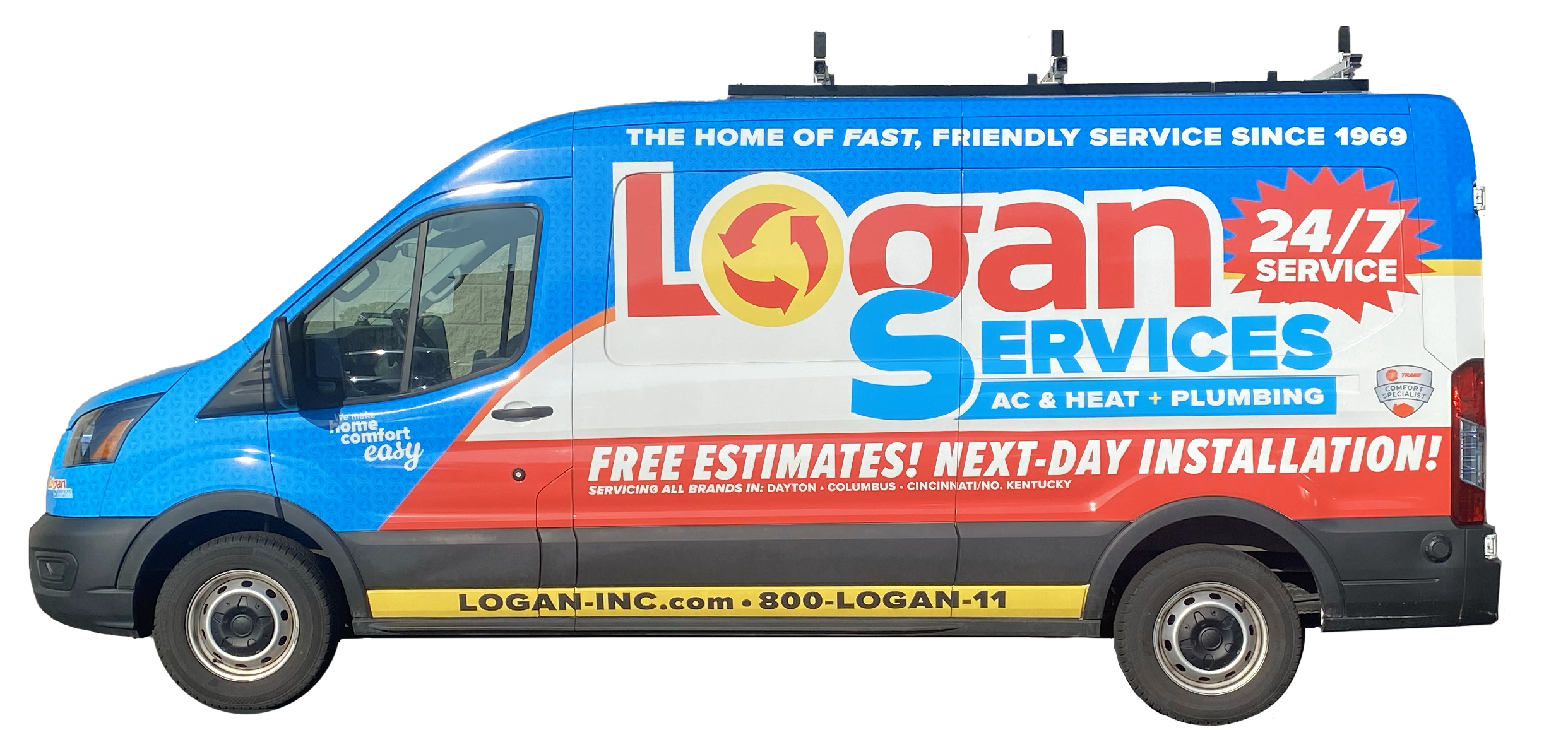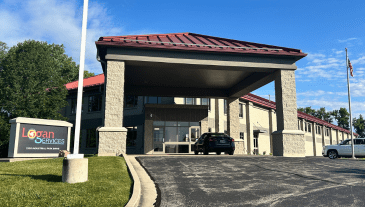Have you ever wondered, “How does AC work?” Summer has arrived in the Dayton, Columbus, and Cincinnati regions! With the hot, humid weather we experience in Ohio this season, you will rely heavily on your A/C system to keep you comfortable.
Air conditioning includes cooling of the air, as well as cleaning the air, and controlling the moisture level in your home. An air conditioner is able to cool a building by removing the heat from indoor air and transferring it outdoors.
The Basic Components of an Air Conditioner
The main components that make an air conditioning work include the compressor, the condenser, and the evaporator coil. Each of these parts plays a crucial role in the process of cooling and purifying air. Familiarizing yourself with these components helps in understanding how air conditioners function. Furthermore, knowing these components is beneficial during air conditioning installation and maintenance.
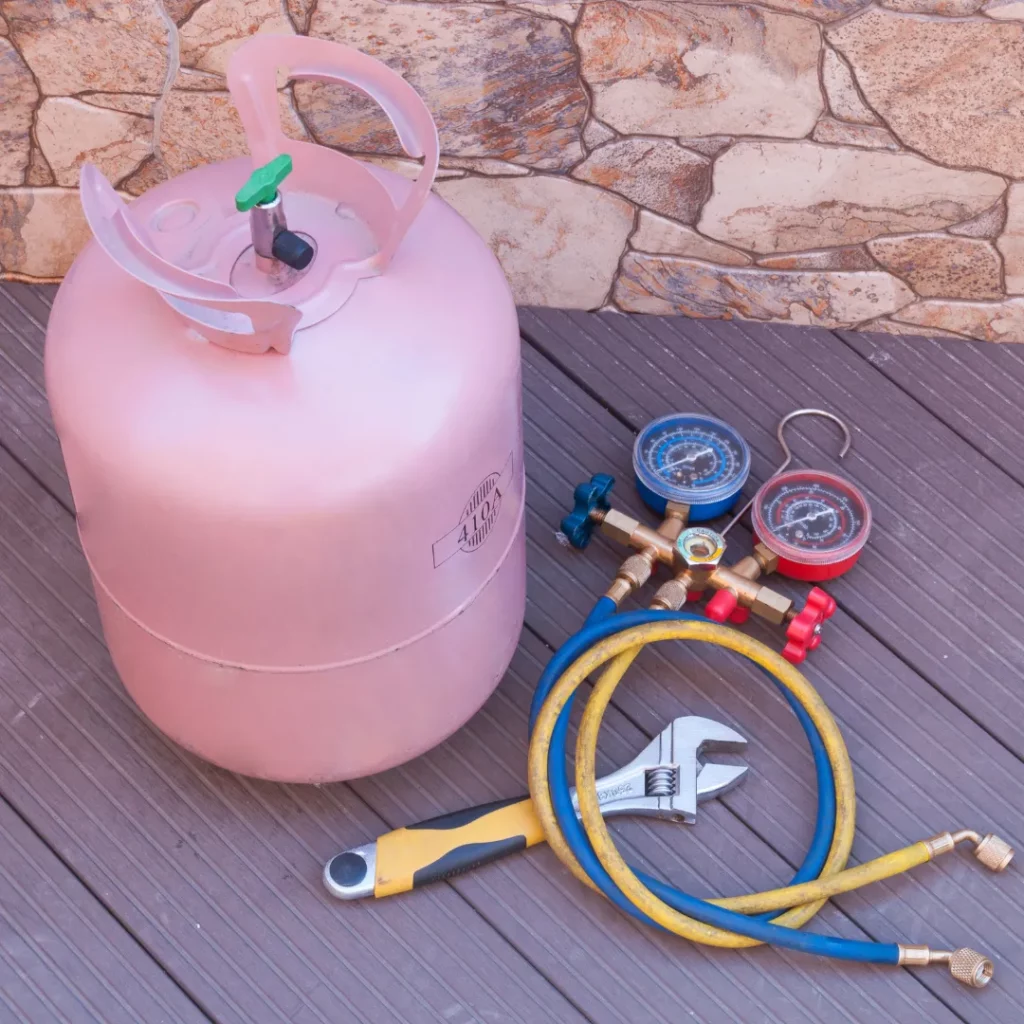
A/C Refrigerant
A chemical refrigerant in the system that absorbs the unwanted heat and pumps it outside.
Whether it is R22 freon or 410A puron, having the correct levels of refrigerant is essential to a properly operating air conditioner.
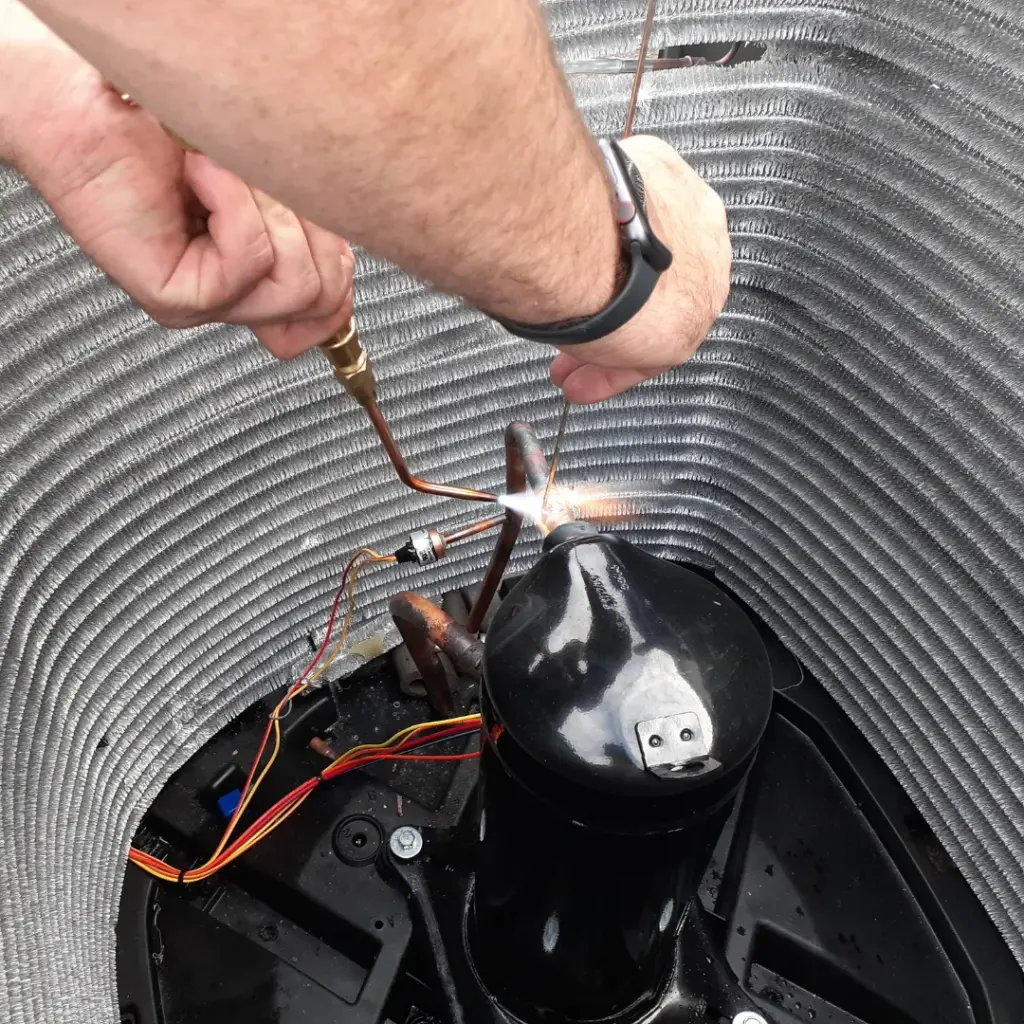
Compressor
The center or “heart” of the system, the air conditioner compressor acts as the pump that moves refrigerant through the A/C system.
While there are multiple types of compressors manufactured, the most commonly used compressor for residential HVAC applications is the scroll compressor.
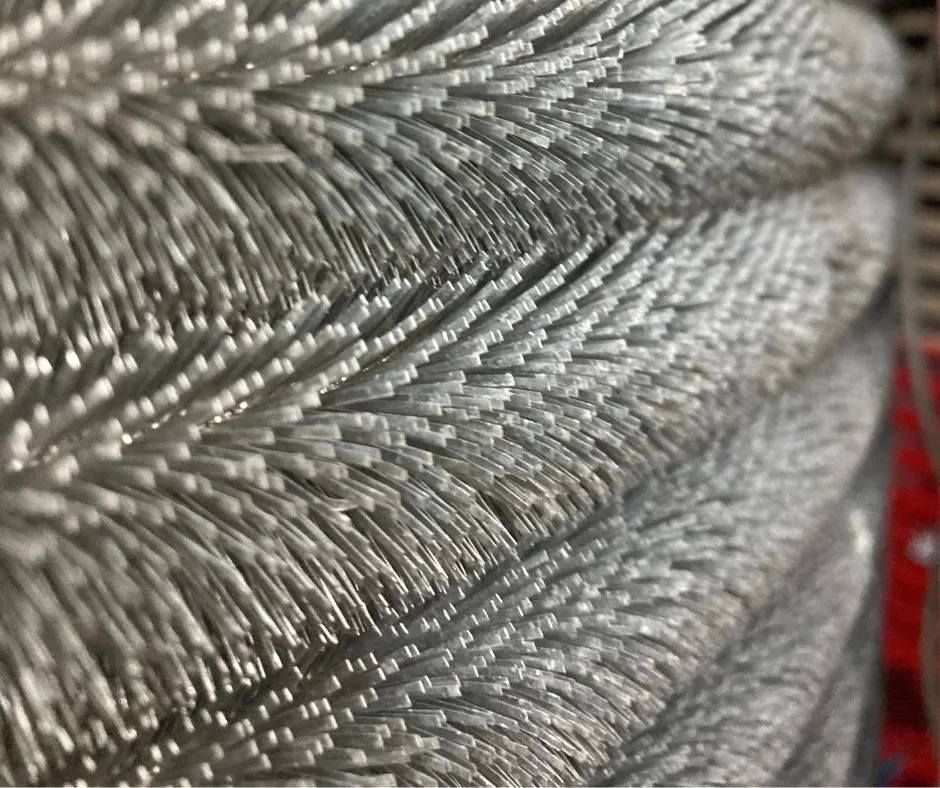
Condenser Coil
The condenser coil is a series of piping that facilitates heat transfer of the A/C refrigerant and brings it to the expansion valve.
Condenser coils are typically made of either copper or alluminum. While both work well, all-aluminum coils are the best for preventing corrosion.
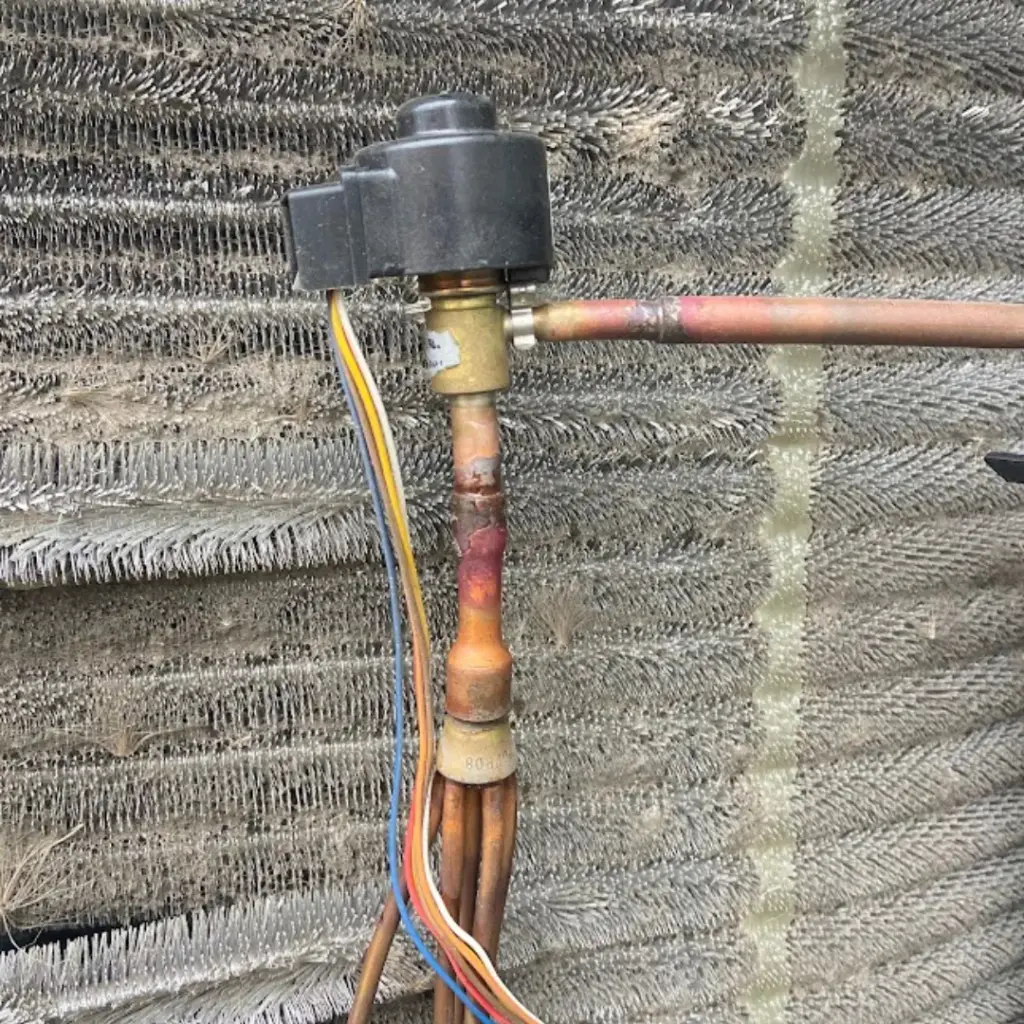
Expansion Valve
The “brain” of the system, the expansion valve is a tiny opening that the hot refrigerant passes through. The air conditioner refrigerant emerges as a cool pressure mist due to expansion.
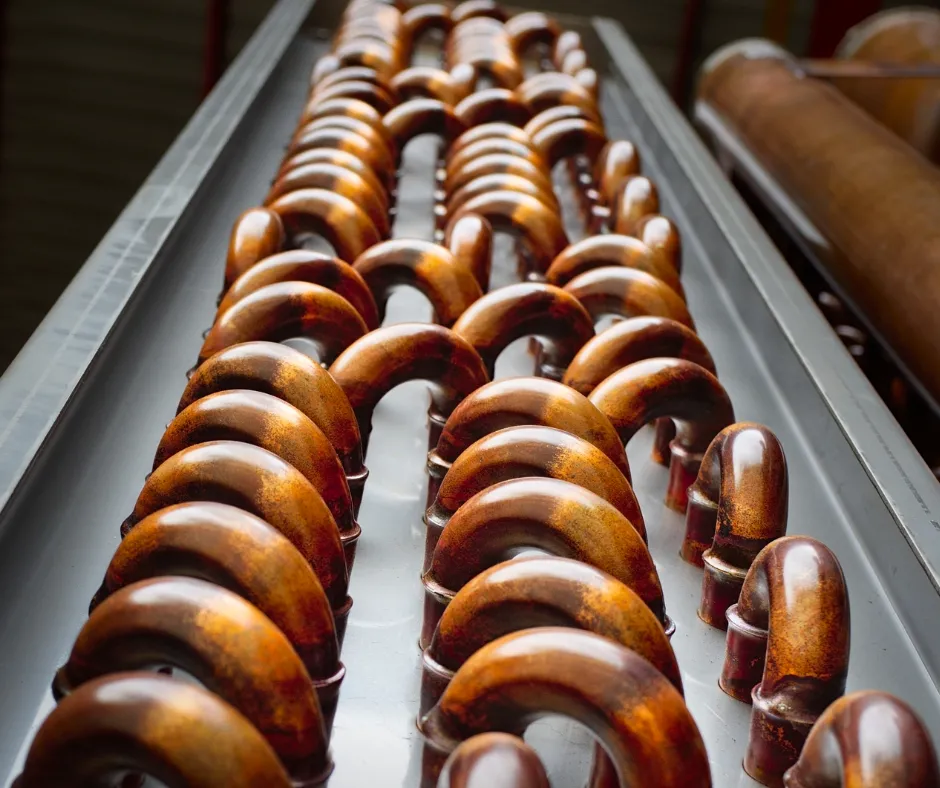
Evaporator Coil
The evaporator coil is a series of piping connected to a furnace or air handler that blows indoor air across it, causing the coil to absorb heat from the air. The cooled air is then delivered to the house through ductwork. The refrigerant then flows back to the compressor where the cycle starts over again.
While many homeowners don’t realize this, your furnace is also a big part of your cooling system, which is why we always recommend replacing both units at the same time.
The Refrigeration Cycle in the AC Unit
Step 1: The compressor pressurizes the refrigerant
As previously mentioned, the compressor is responsible for pressurizing the refrigerant which changes it from a low-pressure gas to a high-pressure gas. This conversion is crucial in the process of cooling your service area.
Step 2: Heat dissipation by the condenser
Recognized for its heat dissipation role, the condenser coil receives the high-pressure gas from the compressor and changes it back into a liquid. This heat is then expelled out of the air conditioning system and into the surrounding atmosphere or space.
Step 3: The evaporator’s role in cooling
Once the refrigerant reaches the evaporator coil, it turns into a cool gas after passing through the expansion valve. The air, as it passes over the evaporator coil, becomes cool and is spread through your home by the air handler. This is what creates the cool internal atmosphere that your air conditioner is designed to provide.
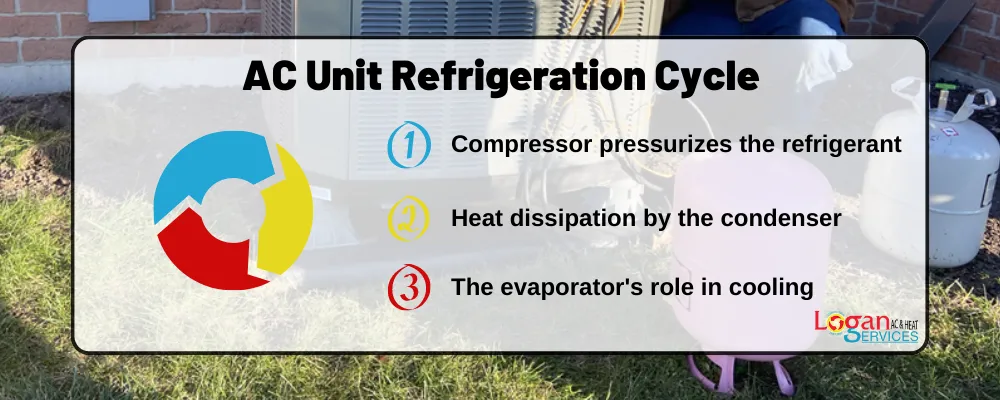
Simply understanding these steps, and carrying out regular maintenance checks can improve the performance of many air conditioning systems, including ductless systems and air coolers. The evaporative air coolers, specifically, rely on these components to cool and purify your air.
Energy Efficiency in Air Conditioning Systems
With escalating global concerns about energy consumption, it’s more important than ever to understand and optimize the energy efficiency of your air conditioning systems. High energy efficiency in air conditioning units reduces power usage, which not only lowers energy bills but also reduces the unit’s carbon footprint. Whether you’re using portable air conditioners or ductless systems, energy efficiency is a priority.
The Importance of Seasonal Energy Efficiency Ratio (SEER)
The Seasonal Energy Efficiency Ratio (SEER) rating is a critical criterion when choosing an air conditioning installation. The SEER measures the efficiency of air coolers during the cooling season. An AC system with a higher SEER rating is more energy-efficient, using less energy to cool a room than a system with a lower rating. Therefore, understanding SEER ratings helps consumers make informed decisions when purchasing air conditioners.

How Variable Speed Technology Contributes to Efficiency
Variable speed technology in air conditioning systems enhances energy efficiency by allowing the air conditioner’s compressor to operate at different speeds. Unlike traditional air conditioners that only operate at one speed, air conditioners with variable speed technology adjust their speed based on the cooling needs of your service area. As such, they prevent wasteful energy use, making your system air conditioner more economical and environmentally friendly.
While the role of the thermostat and energy efficiency in air conditioning systems is clear, regular maintenance is paramount. Keep in mind that the efficiency of your system can be affected by various factors, including the cleanliness of your air conditioner filters and the levels of the coolant chemicals. As part of your maintenance routine, consider air conditioning service to ensure your AC unit’s optimal performance and longevity.
Logan for you Air Conditioning Needs
At Logan AC and Heat, we are experts in AC installation. We have been in business for over 20 years, and our technicians have a wealth of experience in installing all types of AC systems. We use only high-quality parts and materials, so you can be confident that your new AC system will last for many years to come. We also offer a satisfaction guarantee, so you can be sure that you’re making the right decision.
We understand that choosing an AC company can be a daunting task. That’s why we offer free estimates and consultations so that you can get a clear understanding of your needs and the cost of installation. We’re also available 24/7, so you can get your AC installed quickly and easily.
We’re committed to providing excellent customer service. We’ll work with you to find a time that’s convenient for you, and we’ll keep you updated on the progress of the installation.
If you’re in need of AC installation, we encourage you to contact Logan AC and Heat. We’ll be happy to answer any questions you have and help you choose the right system for your home.
We’re the best in the business, and we’ll take care of you from start to finish.
Let the fast, friendly team at Logan Services A/C, Heat & Plumbing know if we can help with any repair or replacement needs you have this year!

